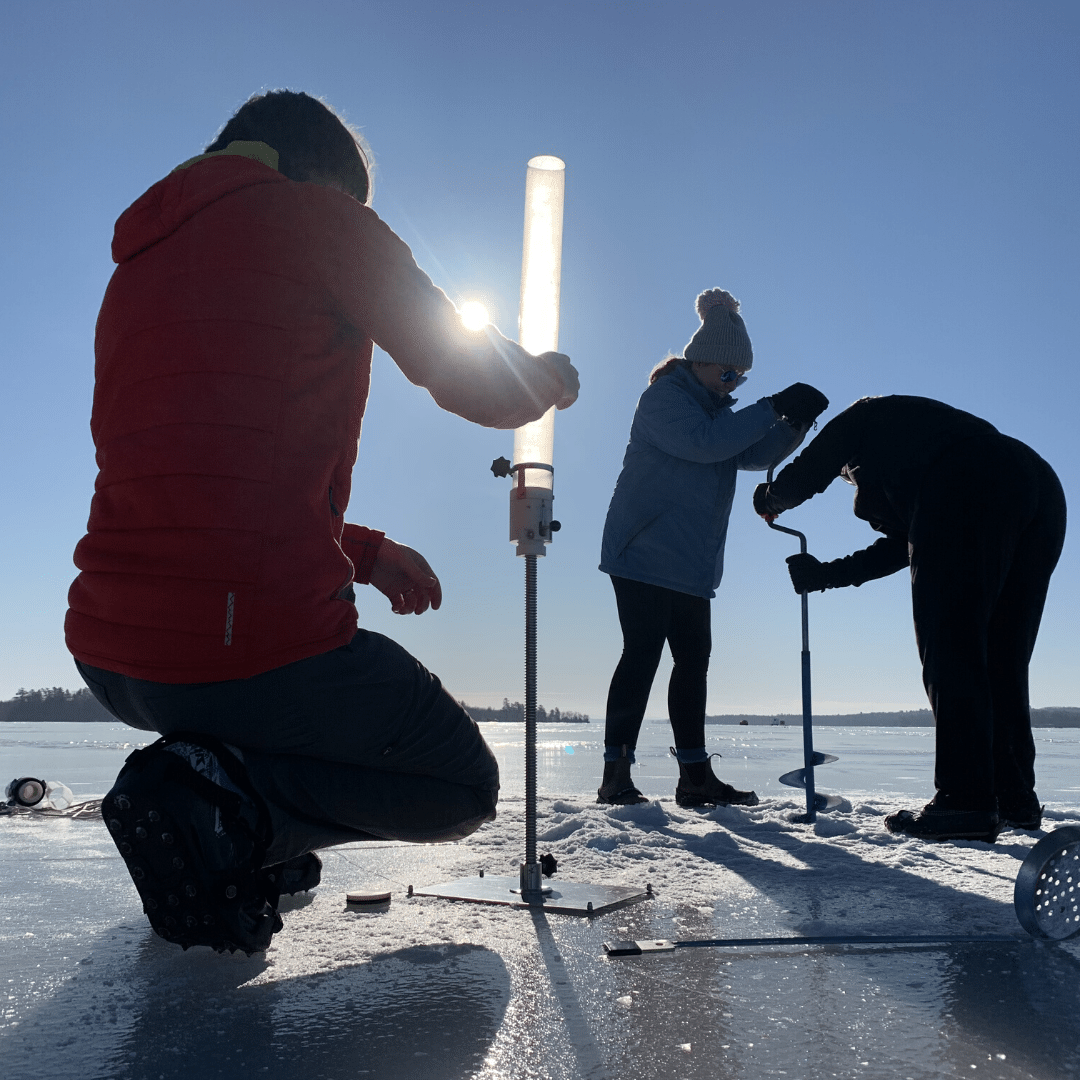
Meet Maine-eDNA: Sam Silverbrand, Graduate Research Assistant
Samantha (Sam) Silverbrand is a Masters student in Marine Biology and a Graduate Research Assistant on the Maine-eDNA project who is working in Mike Kinnison’s lab at the University of Maine. She has begun research on sediment eDNA (or sedDNA) and has collected four lake cores for further developing sedDNA approaches. The four lakes include Pushaw Lake, Chemo Pond, Highland Lake, and the Damariscotta Lake.
Silverbrand has been extracting DNA from the collected sediments. The collected cores each represent approximately a 300-year span of the lake they were collected from. The cores are separated into smaller segments, in order to get a better idea of the history of the lake. By dividing the cores into segments, Silverbrand can more accurately identify what may have occurred on a smaller time scale.
Silverbrand is specifically looking for Alewife DNA and the eDNA of plankton and algae they affect in lakes, in order to understand what the population of Alewife may have looked like in the past and how it has changed over time. As more dams are removed around the state, Alewifes are being reintroduced to these environments. Alewifes are also a culturally and economically significant resource in Maine. They are an important fishery for indigenous people and are becoming increasingly valuable to fisheries, including as bait for lobster. However, many Alewife populations went extinct more than a hundred years ago, so it is sometimes difficult to know what their restored ecosystems should look like. This research will help Maine-eDNA personnel get a better idea of where Alewife once lived, in what amounts, and how they historically shaped their broader lake communities, so researchers can better influence ongoing and future restorations.
“In order to get any results, you have to develop a molecular tool, known as a primer, which is a segment of DNA that will match the collected species DNA,” says Silverbrand. “We’re looking to design generalized primers that are able to bind to the varying DNA segments of fish from a water sample.”
Silverbrand is making sure that the created primers are capturing the appropriate amounts of DNA from water samples and that they are able to correctly identify the species found in each environment. The more DNA a primer is able to capture, the more complete the picture of what is occurring in the environment will be.
